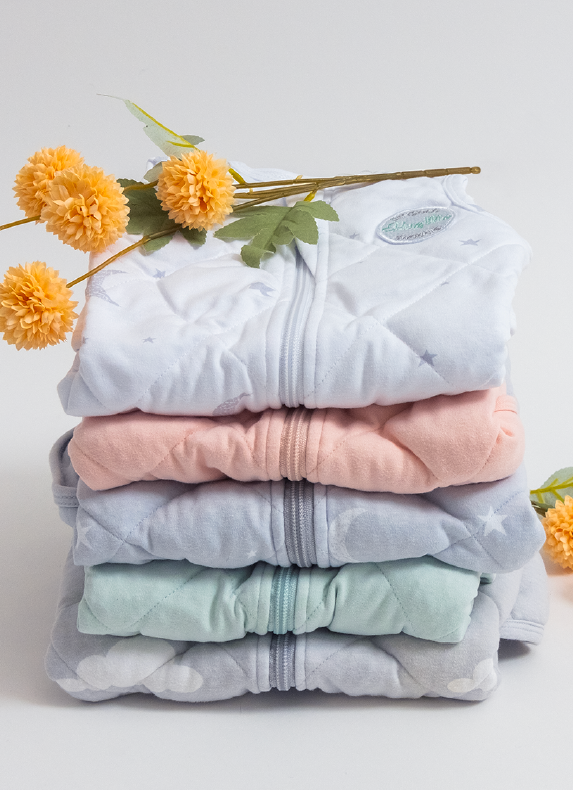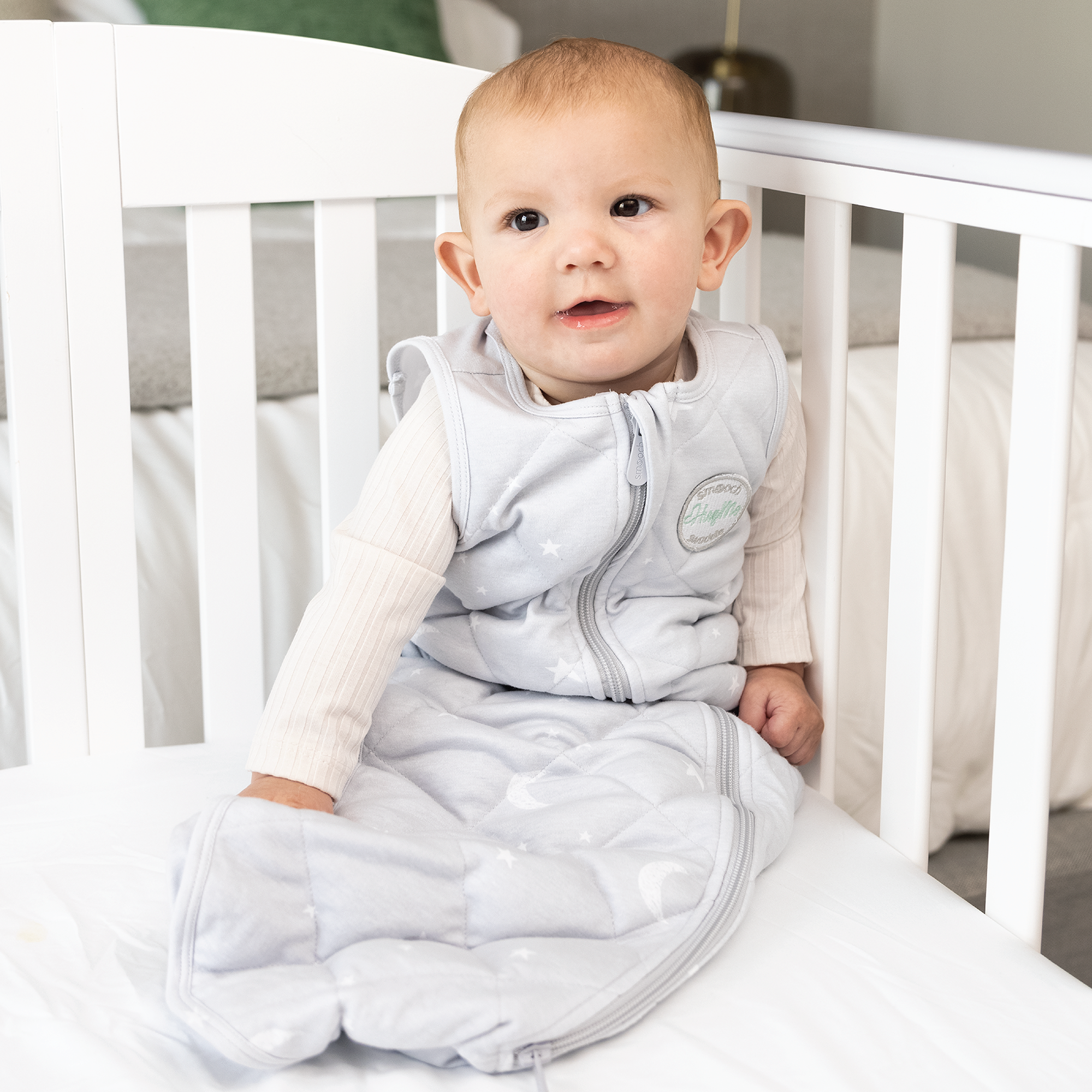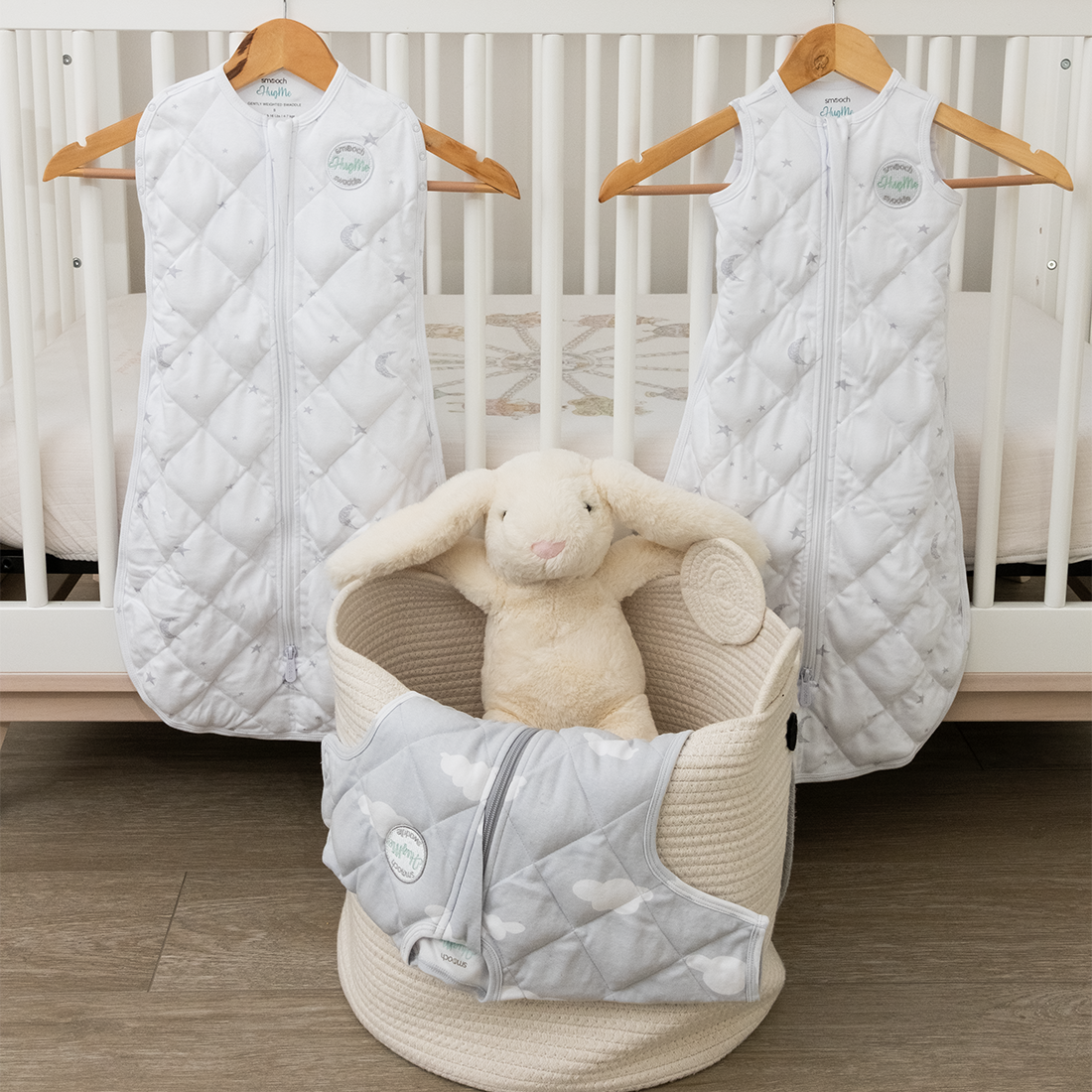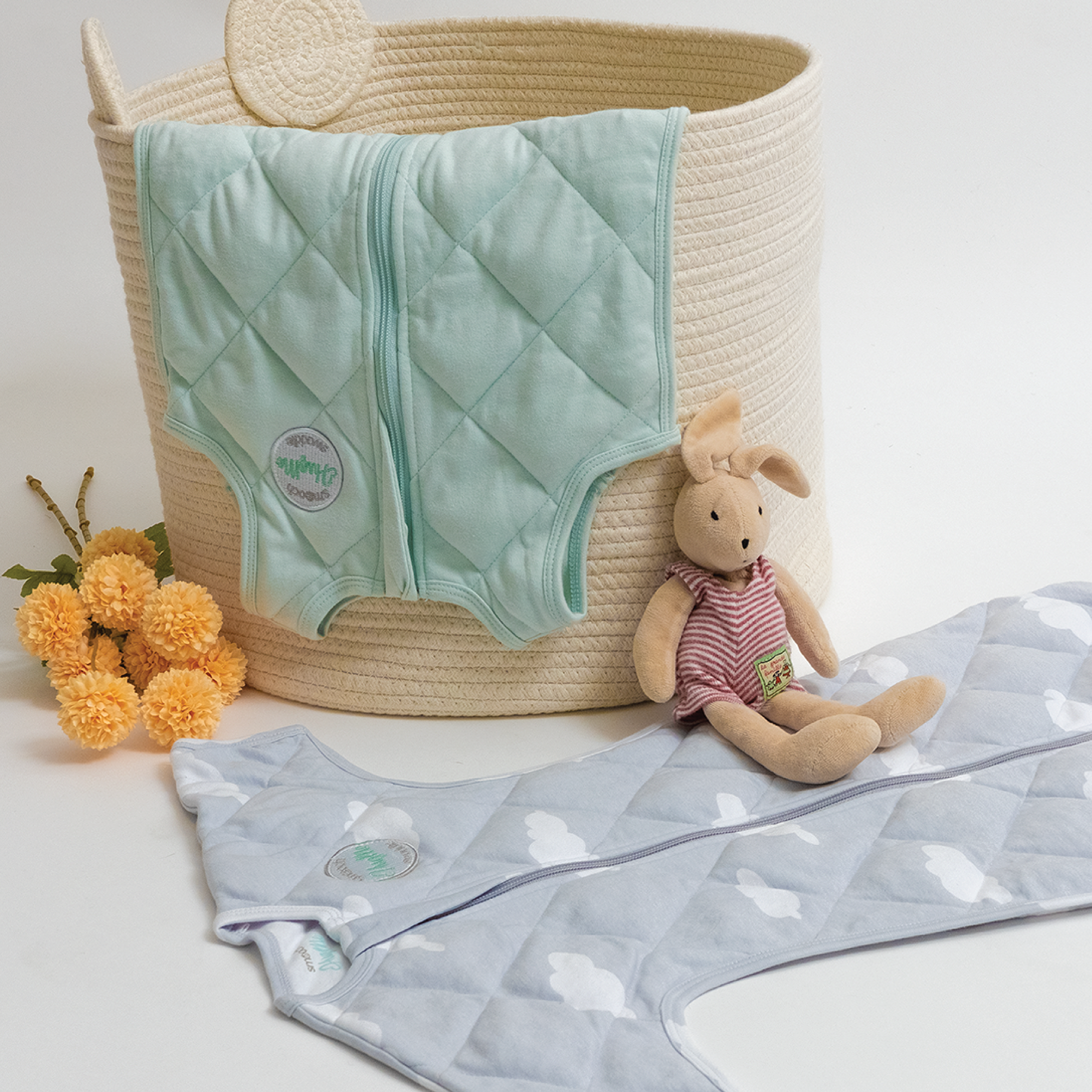It's natural for parents to worry about their baby's safety while they sleep. Questions like whether they're too hot, too cold, or breathing well often linger after bedtime. To ease these concerns, it's crucial to follow the proper precautions when putting your baby down for sleep. What guidelines should you follow regarding blankets, weighted blankets, and sleep sacks?
What is appropriate infant sleep clothing?
What clothing is suitable for infant sleep? It is recommended to dress your baby in form fitting, breathable footies or onesie depending on the temperature of your baby’s nursery. The recommended temperature is 68°F-72°F. For fall and winter nights, dress your baby in no more than one additional layer. Pediatricians suggest using using a wearable blanket like a sleep sack or a swaddle if you're concerned about your baby being cold. These garments cover the body without cover your baby’s face.
Swaddles and Sleep sacks are an excellent choice for keeping your baby snug and warm during sleep. They don’t inhibit your baby's breathing and come in various breathable designs, some with arms and some without, ensuring babies stay warm while preventing overheating.
Smooch Gently Weighted Wearable Sleep Solutions
Using a loose weighted blanket provides numerous benefits for children and adults, but it presents clear risks for babies. That's why opting for a wearable swaddle or sleep sack solution is the safest choice for infants. The Smooch Gently Weighted Sleep Sack, Swaddle, and Transition Sack offer wearable weighted sleep solutions with evenly distributed weight to ensure a gentle, calming effect without restricting movement.
What does the AAP say in its Safe Sleep Guidelines?
What do they recommend when it comes to blankets and sleep sacks?
The AAP states that “Soft objects such as pillows and pillow-like toys, quilts, comforters, sheepskins, and loose bedding can obstruct an infant’s nose and mouth.”
They go on to say “Infant sleep clothing is preferable to blankets and other coverings to keep the infant warm. A large percentage of infants who die of SIDS are found with their head covered by bedding. Therefore, no pillows, sheets, blankets, or any other items that could obstruct infant breathing or cause overheating should be in the bed.” The Center for Disease Control (CDC) agrees. See CDC safe sleep guidelines and recommendations here.
As previously stated, weighted blankets and non-weighted blankets pose a significant risk to babies, as they could potentially cover their faces. Since babies lack the ability to remove them, having any blankets in the crib until a baby turns 1 years old poses a serious danger to their safety.
In June 2022, the AAP revised its guidelines and currently does not endorse weighted wearable sleep solutions. You can access their report here. It's important to clarify that this isn't a recall. We remain optimistic that the implementation of new mandatory standards by the ASTM committee and ongoing clinical research will lead to a reconsideration of the AAP's 2022 statement as AAP’s current stance is not based on any clinical evidence.




